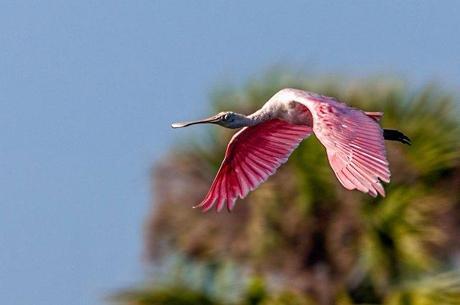
While in Florida in May, I photographed several mated pairs of Roseate Spoonbills. I was excited to see so many spoonbills and watch their behavior, and tried to capture some unique images. The spoonbill pairs were in different stages of mating, nest building, and raising young. There were a few pairs that were building nests; some with young chicks in nests; and at least two pairs’ young that had recently fledged, but were still at the rookery being fed by their parents. Therefore, there was plenty of activity and many photography opportunities. However, the spoonbills did not always cooperate (e.g., hiding in shadows, flying in the wrong direction, partially hidden by branches or leaves).
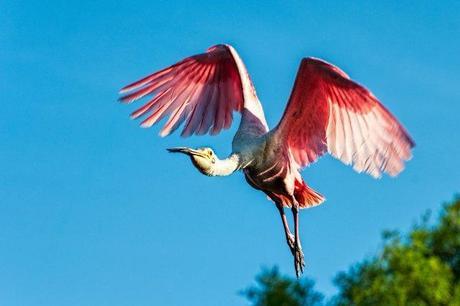
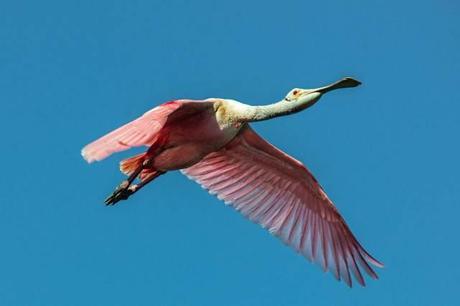
Roseate Spoonbills are large wading birds, spending most of their time in shallow water feeding, except when raising young. They are interesting to watch as they hunt for food (small fish, shrimp, mollusks, snails and insects), because they sweep their spoon-shaped bills back and forth in the shallow water for food. Scientists believe their pink and red colors are derived from some of the crustaceans that they eat.
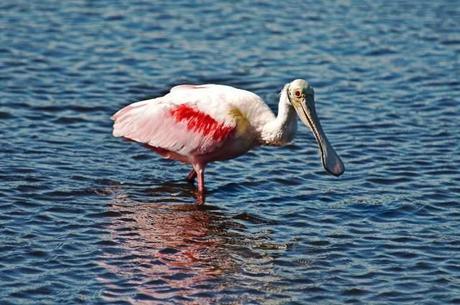
The spoonbills’ colorful feathers were used to adorn ladies’ hats and fans in the 1800′s. Unfortunately for the spoonbills, by the 1930′s, there were only 30 to 40 nesting pairs, which were located on the keys of Florida Bay. Since becoming a protected species, their numbers have significantly increased to an estimate of over one thousand mated pairs. However, they may be in trouble again. In one of their favorite nesting areas, Florida’s Everglades, the number of spoonbills is declining. Poor water management in the Everglades has significantly changed water depths and salinity levels in Florida Bay, which is impacting the spoonbills’ diet. You can read about this at: http://www.audubonmagazine.org/articles/birds/roseate-spoonbills-send-warning-signs-about-florida-everglades

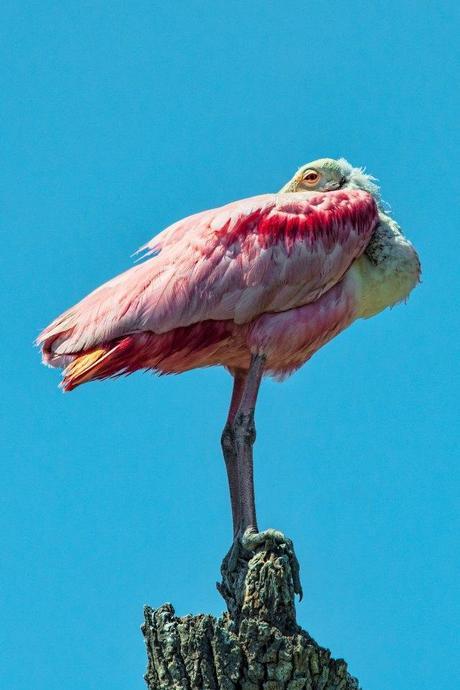
Besides their obvious red, pink, and white feathers, they have orange tail feathers, which can be seen in the above image and the last image. I really like the above image, even though the spoonbill’s unique bill is hidden, because of its “pose” on the tree stump and while trying to sleep, it kept a close eye on me from time to time by looking over its back when hearing my camera’s shutter.
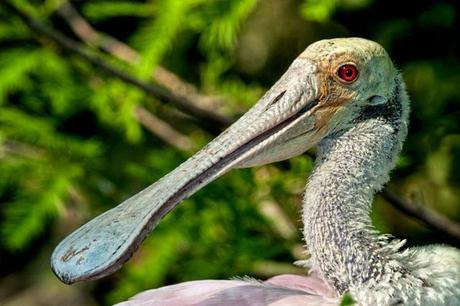
As you can see in the above closeup, Roseate Spoonbills have bright red eyes and both male and female adults have no feathers on their heads, which contributes to their very unusual appearance.
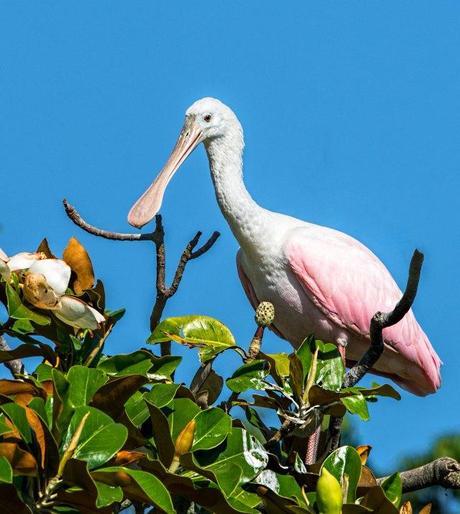
Above and below are recently fledged spoonbills. Their colors are muted, and they still have soft white feathers on their heads.
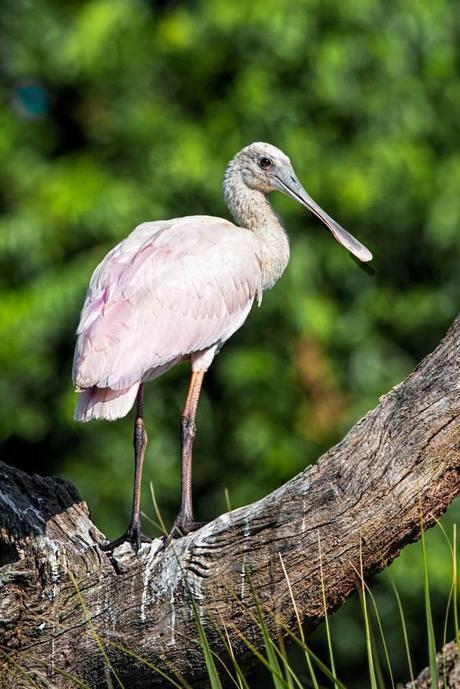
As mentioned above, a couple of the Roseate Spoonbills pairs had young in their nests (below). The young in the next images are about two weeks old.
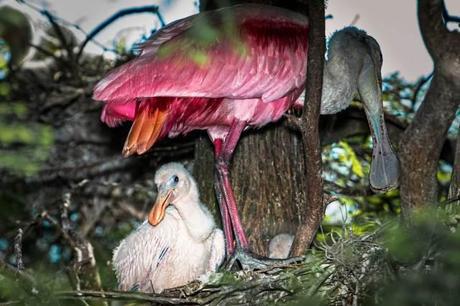
One of my favorite images is below showing the pitiful look on a hungry chick’s face looking up to one of its parents, wanting to be fed, which is what all young birds are constantly demanding. Both the male and female spoonbills take turns on the eggs (usually 2 to 5) in the nest and both will take turns looking for food and feeding their young.
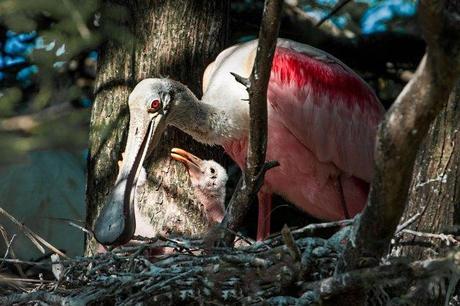
A couple more images follow of a pair that were building a nest deep within a tree.
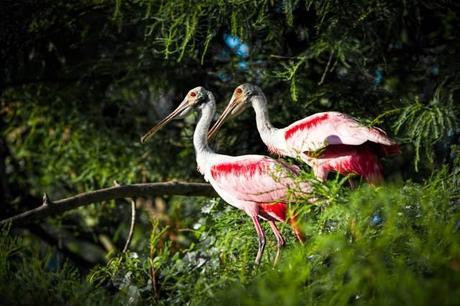
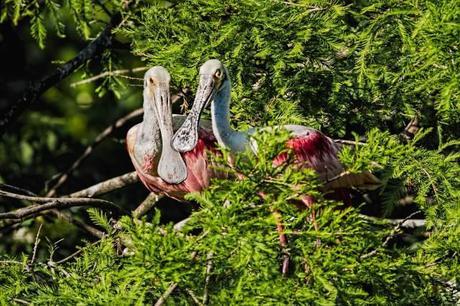
The loving couple pose above. Below are a few more images.
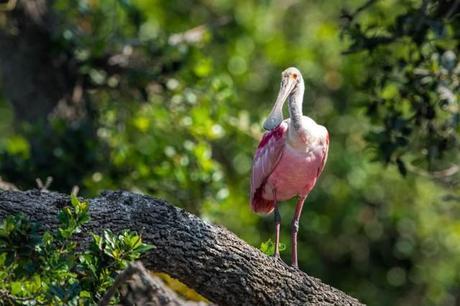
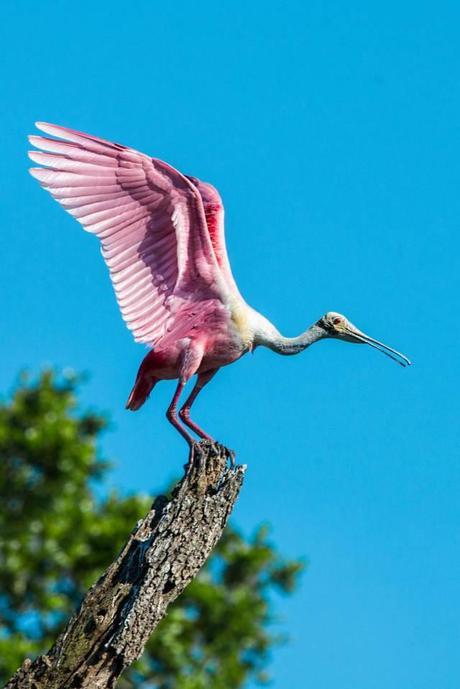
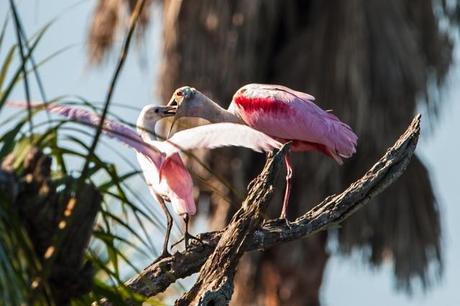
Above, a fledgling is being fed. Unfortunately, I only had one opportunity for this shot, because as I came around to the right to eliminate the foreground trees, the spoonbills quit feeding and flew away. Below is the perfect image to end this blog article, since it is a tail-end view of a Roseate Spoonbill showing its colorful wings and bright orange tail. They are very unusual and oddly beautiful birds–Mother Nature has quite a whimsical imagination.
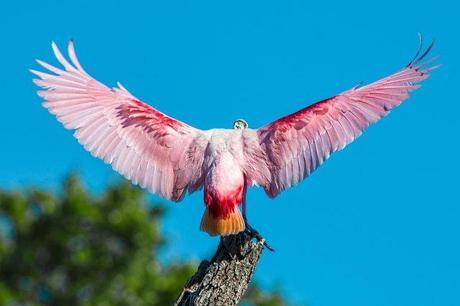
Comments on my blog and this article are appreciated and can be entered by clicking on “Comments” found below the Like this: section. You can also read other’s comments there.
29.894264 -81.313208